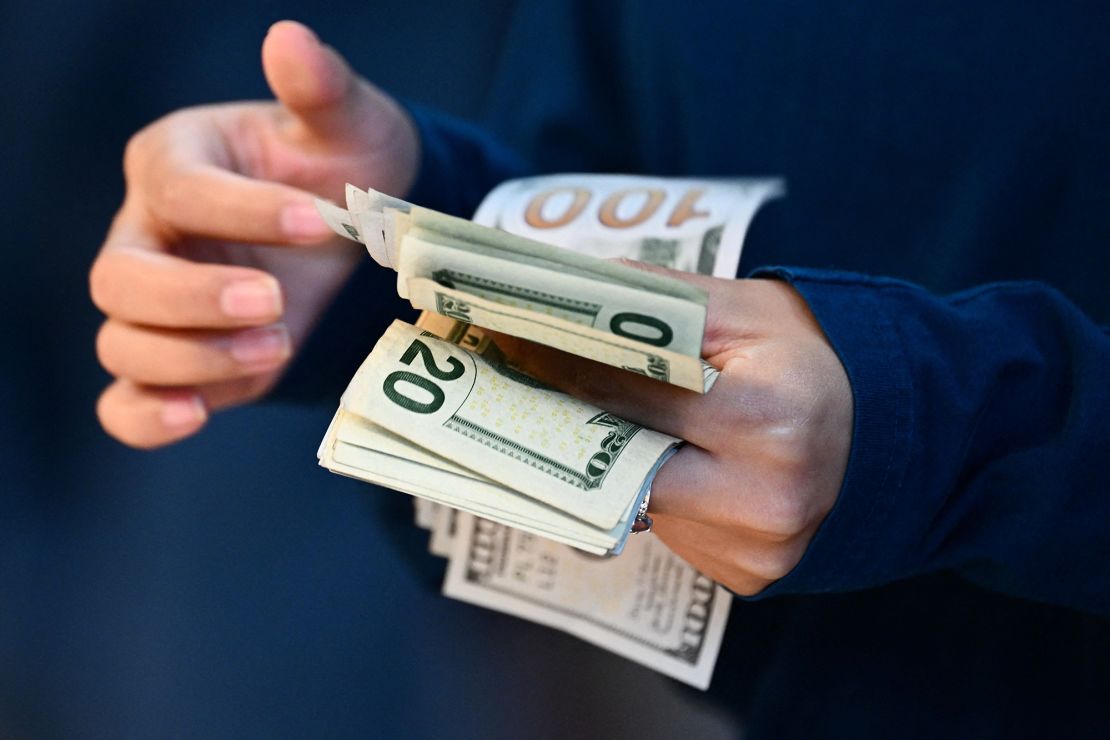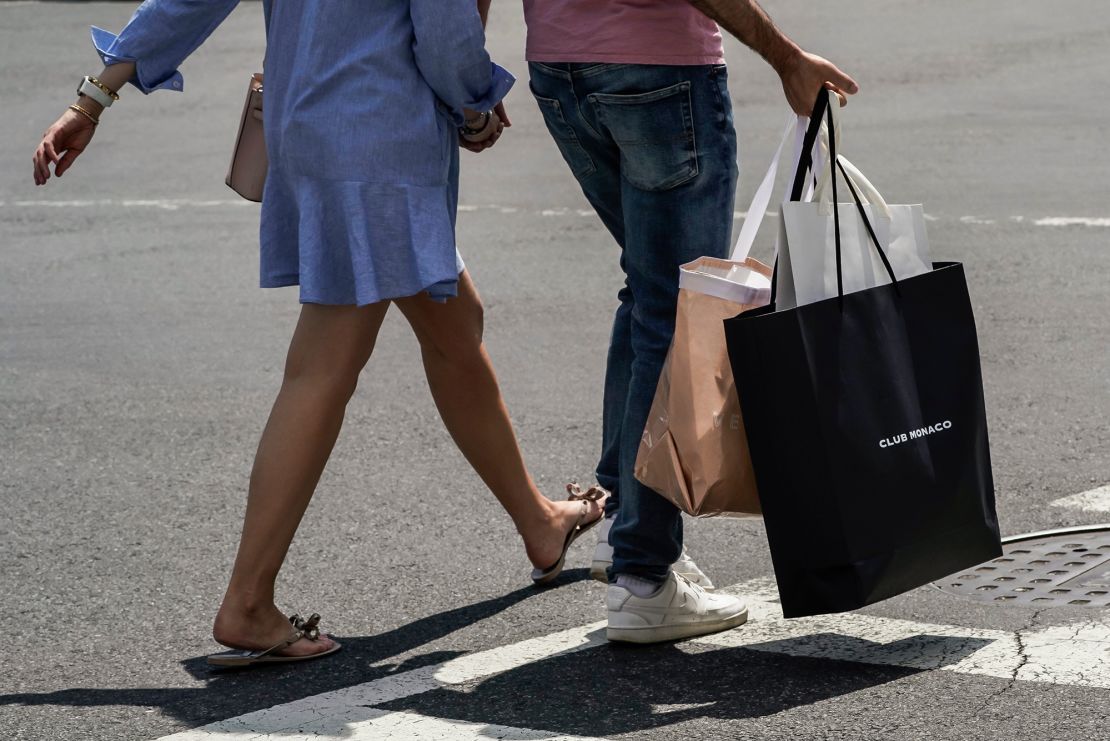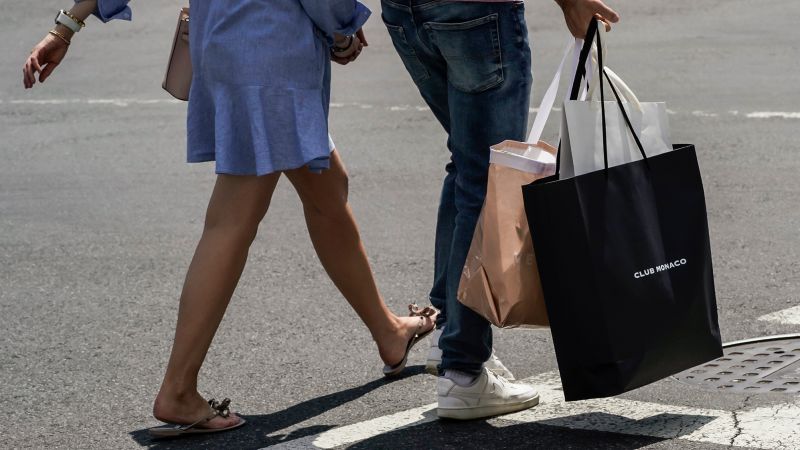Ballpark attendance boomed this summer, Barbenheimer revived the box office and a Renaissance of live performances brought concerts into new Eras.
In mid-2023, Americans’ enduring efforts to satisfy post-pandemic cravings for experiences hit a fever pitch.
“Everybody went out on tour,” said Keith Gentili, a 55-year-old New Hampshire resident who saw 13 shows this summer, a total that surpassed what he’d see in an entire year pre-pandemic. “It was like a buffet. The buffet was open.”
Consumer spending this year remained strong despite high inflation and rising interest rates.
But after the summer of splurge, some economists and consumer analysts anticipate that those and other pressures could cause that resilience to buckle — perhaps meaningfully so — during the critical holiday season.
However, it also could mean that holiday spending just might look a little different and skewed more toward experiences than it has done in past years.
“I think that, rationally, you would expect there would be some sort of consumer pullback, but then again, we’re seeing so many conflicting signs right now,” said Ted Rossman, senior industry analyst at Bankrate. “We see people spending aggressively on experiences like travel and dining and concerts and sporting events, and that’s not normally what we would see when people get nervous about the state of the economy.”
He added: “But I think it shows that right now is not a normal time; I think we still have this pent-up demand from the pandemic, and I think a lot of people are saying, ‘You know what? You only live once, and I’m going to do it anyway.’”
Consumers aren’t expected to pull back entirely this holiday season, and some early surveys indicate that spending will not only be up from last year, but also possibly even higher than levels seen pre-pandemic.
Respondents to KPMG’s 2023 holiday survey said they plan to spend 5% more this season, said Matt Kramer, KPMG’s consumer and retail national sector leader.
Discretionary categories such as restaurants, apparel and travel are expected to benefit from people spending less on essentials, which are less expensive because of lower inflation, he said.
“What stands out the most is this ‘leaning in’ to holiday travel and wanting to have those experiences with friends and family,” he said.
As broader economic uncertainty grows and consumer sentiment falters, shoppers are expected to be more deal-seeking and price-conscious this season than last year, said Tamara Charm, who heads McKinsey & Company’s consumer insights hub.

But they’re still going to spend, she said.
“Our most recent [Consumer Pulse research] measure was that 79% of folks are still trading down,” she said. “And then consumers are also still saying they’re going to splurge, especially higher-income and younger consumers. But the splurge seems to be going to experiences, to travel to out-of-home entertainment, fitness and then also self-care.”
Consumers closed out the summer with a bang, according to the Commerce Department’s latest retail sales report released earlier this week.
US retail sales rose 0.7% in September from August, marking the sixth month in a row of growth, according to data that’s adjusted for seasonality but not inflation.
And in September, that inflation didn’t have an outsized affect on the sales growth, considering the Consumer Price Index for September rose 0.4% on a monthly basis, and goods prices were up only 0.1%.
However, while the monthly retail sales reports can provide a window into how much Americans’ appetites for goods are growing or waning, they show only part of the consumer spending picture. Aside from sales captured at some restaurants and bars, sales at services-related industries are excluded.
A more comprehensive look at consumer spending will come at the tail end of the month when the Personal Consumption Expenditures data is released.

Consumer spending is expected to slow in the coming months but not fizzle out completely, said Gus Faucher, senior vice president and chief economist at the PNC Financial Services Group.
“There are still some positives: Households still have money saved up, consumer debt burdens are low,” he said, noting that while job growth has slowed considerably from their red-hot pace of the past three years, “it’s still solid job growth.”

But there’s also plenty of bifurcation occurring in what’s been a post-Covid K-shaped recovery with the wealthiest households having rebounded more strongly than lower-income Americans.
“Our feeling is that any extra savings that remain are skewed toward upper-income households,” said Nancy Vanden Houten, Oxford Economics’ senior economist. “We think that lower-income households are going to have a harder time maintaining spending.”
That especially includes Americans who face financial pressures from student loan payments resuming, rising debt, dwindling savings, and high interest rates, she added.
Additionally, delinquencies are also rising, but are mostly back to pre-pandemic levels; the labor market is slowly becoming less robust; and the geopolitical outlook has grown even more uncertain.
The growing list of complicating — and potentially culminating — factors are more than mere stumbling blocks to the average American household that has minimal wiggle room in that monthly budget.
“The economic data has been better than a lot of us expected,” Rossman said. “But I think there are starting to be more and more cracks in the foundation, and that tends to be the most evident among people with lower incomes and lower credit scores.”
He added: “They’re kind of the canaries in the coal mine.”
Credit card delinquencies are noticeably worse among people with lower credit scores, he said, noting that subprime auto delinquencies are worse now than they were during the financial crisis of 2007-2009.
“A lot of folks feel comfortable today, but it wouldn’t necessarily take a whole lot to push them into a situation where they don’t feel all that comfortable,” said Matt Schulz, chief credit analyst with LendingTree.
For some people, that may be the student loan payment restarting; for others, it may be a job loss or an unexpected medical expense. Every person’s situation is different, but sometimes it doesn’t take much for a comfortable situation to turn dicey, he said.
“As well as people have generally handled their business over the last couple of years, there comes a point where the headwinds that they face and the challenges that they’re up against become too much,” he said.
Read the full article here







